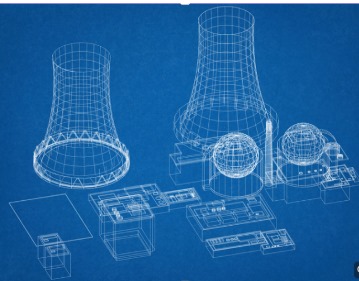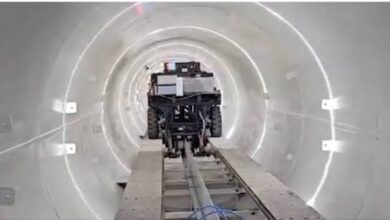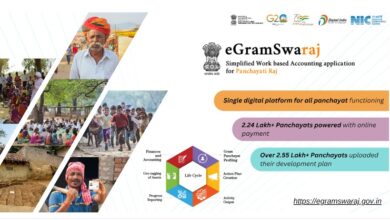Small Modular Reactors: A Game-Changer in Nuclear Energy


Small Modular Reactors: A Game-Changer in Nuclear Energy
The Growing Need for SMRs
The global push towards reducing carbon emissions and achieving energy independence has intensified interest in Small Modular Reactors (SMRs). As traditional fossil fuels lose favor due to environmental concerns, SMRs present an appealing solution to complement renewable energy sources and meet rising electricity demands. Their modularity and scalability make them ideal for diverse applications, from powering remote areas to replacing aging coal-fired plants Energy.
Advantages of SMRs
- Safety and Efficiency: SMRs incorporate advanced passive safety features, such as natural circulation cooling, which reduce the likelihood of accidents. Their smaller size also allows for safer operational environments
- Cost-Effectiveness: Unlike traditional nuclear plants, SMRs can be factory-built and assembled on-site, significantly reducing construction time and costs. Their modular nature enables phased investments and quicker returns on investment
- Flexibility and Versatility: These reactors are adaptable for various uses, including hydrogen production, desalination, and district heating, besides electricity generation. They are particularly suitable for regions with limited grid infrastructure or harsh environmental conditions
Enerdata
Future Potential
The deployment of SMRs is expected to gain momentum, with the first commercial units anticipated by the early 2030s. Their integration into energy systems will support decarbonization goals and enhance energy security. SMRs are seen as critical to achieving net-zero emissions by providing reliable baseload power and stabilizing grids with high renewable penetration
Challenges and Security Concerns
However, the path to widespread adoption is not without hurdles. Licensing frameworks for SMRs need streamlining to avoid delays in deployment. Establishing a robust global supply chain for components and ensuring consistent regulatory standards across countries remain key challenges
On the security front, preventing nuclear proliferation and safeguarding radioactive materials are top priorities. SMRs’ inherent design features and the experience from traditional reactors bolster their safety. Nonetheless, maintaining rigorous oversight and international cooperation will be essential to address security concerns
Conclusion
SMRs represent a promising evolution in nuclear technology, offering a sustainable and secure energy solution. Their ability to integrate seamlessly with renewable energy systems and their potential to serve diverse energy needs position them as a vital component in the global transition to a low-carbon future.
For further details, see the European Commission and Enerdata reports on SMRs
References:
- International Energy Agency (IEA)
- European Commission
The Growing Need for SMRs
The global push towards reducing carbon emissions and achieving energy independence has intensified interest in Small Modular Reactors (SMRs). As traditional fossil fuels lose favor due to environmental concerns, SMRs present an appealing solution to complement renewable energy sources and meet rising electricity demands. Their modularity and scalability make them ideal for diverse applications, from powering remote areas to replacing aging coal-fired plants Energy.
Advantages of SMRs
- Safety and Efficiency: SMRs incorporate advanced passive safety features, such as natural circulation cooling, which reduce the likelihood of accidents. Their smaller size also allows for safer operational environments
- Cost-Effectiveness: Unlike traditional nuclear plants, SMRs can be factory-built and assembled on-site, significantly reducing construction time and costs. Their modular nature enables phased investments and quicker returns on investment
- Flexibility and Versatility: These reactors are adaptable for various uses, including hydrogen production, desalination, and district heating, besides electricity generation. They are particularly suitable for regions with limited grid infrastructure or harsh environmental conditions
Enerdata
Future Potential
The deployment of SMRs is expected to gain momentum, with the first commercial units anticipated by the early 2030s. Their integration into energy systems will support decarbonization goals and enhance energy security. SMRs are seen as critical to achieving net-zero emissions by providing reliable baseload power and stabilizing grids with high renewable penetration
Challenges and Security Concerns
However, the path to widespread adoption is not without hurdles. Licensing frameworks for SMRs need streamlining to avoid delays in deployment. Establishing a robust global supply chain for components and ensuring consistent regulatory standards across countries remain key challenges
On the security front, preventing nuclear proliferation and safeguarding radioactive materials are top priorities. SMRs’ inherent design features and the experience from traditional reactors bolster their safety. Nonetheless, maintaining rigorous oversight and international cooperation will be essential to address security concerns
Conclusion
SMRs represent a promising evolution in nuclear technology, offering a sustainable and secure energy solution. Their ability to integrate seamlessly with renewable energy systems and their potential to serve diverse energy needs position them as a vital component in the global transition to a low-carbon future.
For further details, see the European Commission and Enerdata reports on SMRs
References:
- International Energy Agency (IEA)
- European Commission





